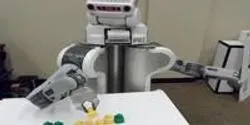News

Researchers at the University of California, San Diego School of Medicine have discovered a widely distributed group of marine bacteria that produce compounds nearly identical to toxic man-made fire retardants.

SP Industries, Inc. (SP), a leading designer and manufacturer of state-of-the-art laboratory equipment, biological drug manufacturing solutions, and specialty glassware, has announced that it has acquired privately held Bel-Art Products (Bel-Art). Headquartered in Wayne (NJ, USA), Bel-Art is a global provider of innovative laboratory solutions serving the scientific, industrial, and healthcare end markets.

Green-chemistry researchers at McGill University have discovered a way to use water as a solvent in one of the reactions most widely used to synthesize chemical products and pharmaceuticals.

Stanley Miller, the chemist whose landmark experiment published in 1953 showed how some of the molecules of life could have formed on a young Earth, left behind boxes of experimental samples that he never analyzed. The first-ever analysis of some of Miller’s old samples has revealed another way that important molecules could have formed on early Earth.

Pittsburgh, PA. June 27, 2014. The Pittcon Program Committee is pleased to announce its 2015 Wallace H. Coulter Lecture, “Plasmonics: Shedding Light on Cross-cutting Science and Technologies,” which will be presented by Naomi J. Halas, Stanley C. Moore Professor of Electrical and Computer Engineering. The lecture will take place during the Pittcon Opening Session on Sunday, March 8, 2015, Morial Convention Center, New Orleans, Louisiana.

Kansas State University diagnosticians are helping the cattle industry save millions of dollars each year by developing earlier and accurate detection of E. coli.

As the human population grows, it is critical that the drain on the planet’s resources be lessened by decreasing consumption of animal protein. According to two panel discussions on June 23 and 24 at the 2014 Institute of Food Technologists (IFT) Annual Meeting & Food Expo® in New Orleans, insects are a promising, economically viable alternative source of high quality protein that leave a substantially smaller environmental footprint.

Challenging risk assessment methods used for decades by toxicologists, a new review of the literature led by environmental health scientist Laura Vandenberg at the University of Massachusetts Amherst suggests that oral gavage, the most widely accepted method of dosing lab animals to test chemical toxicity, does not accurately mimic how humans are exposed to chemicals in everyday life.

The American Chemical Society (ACS) named 10 semifinalists in its Chemistry Champions contest on June 24. The contest aims to find and train promising science communicators — perhaps even find the Carl Sagan of chemistry.











